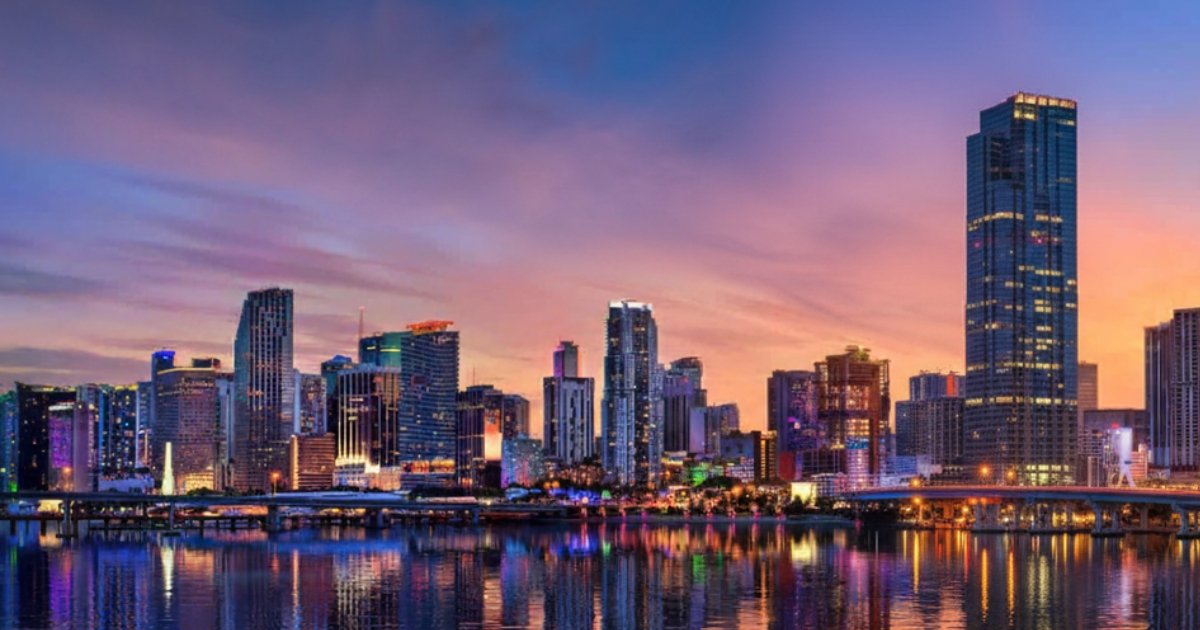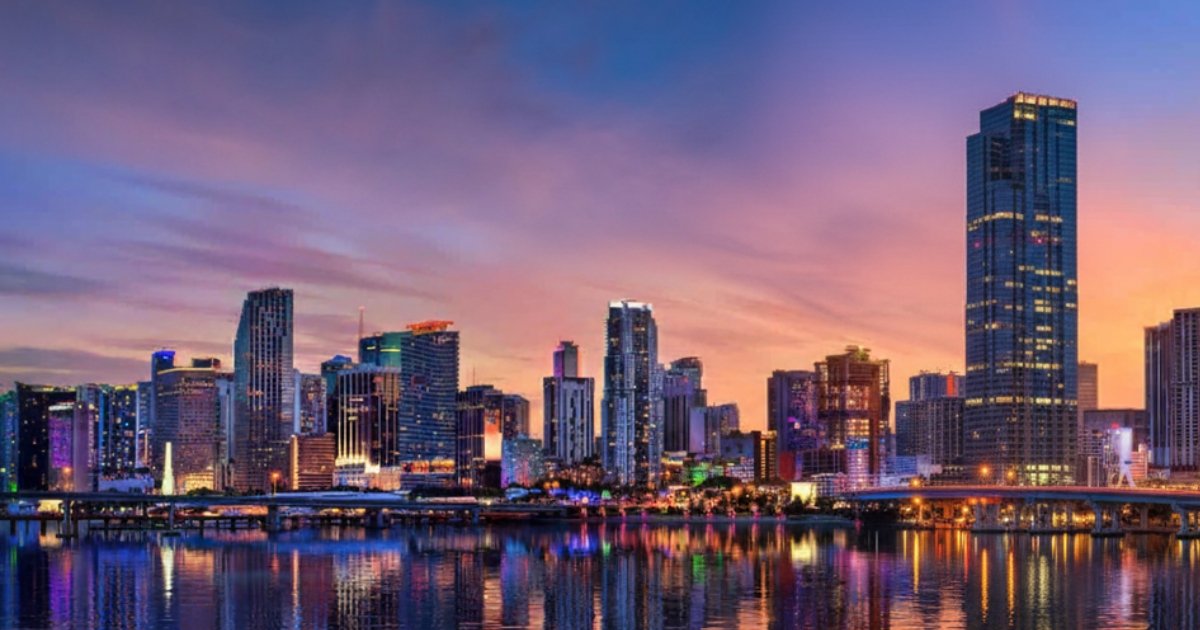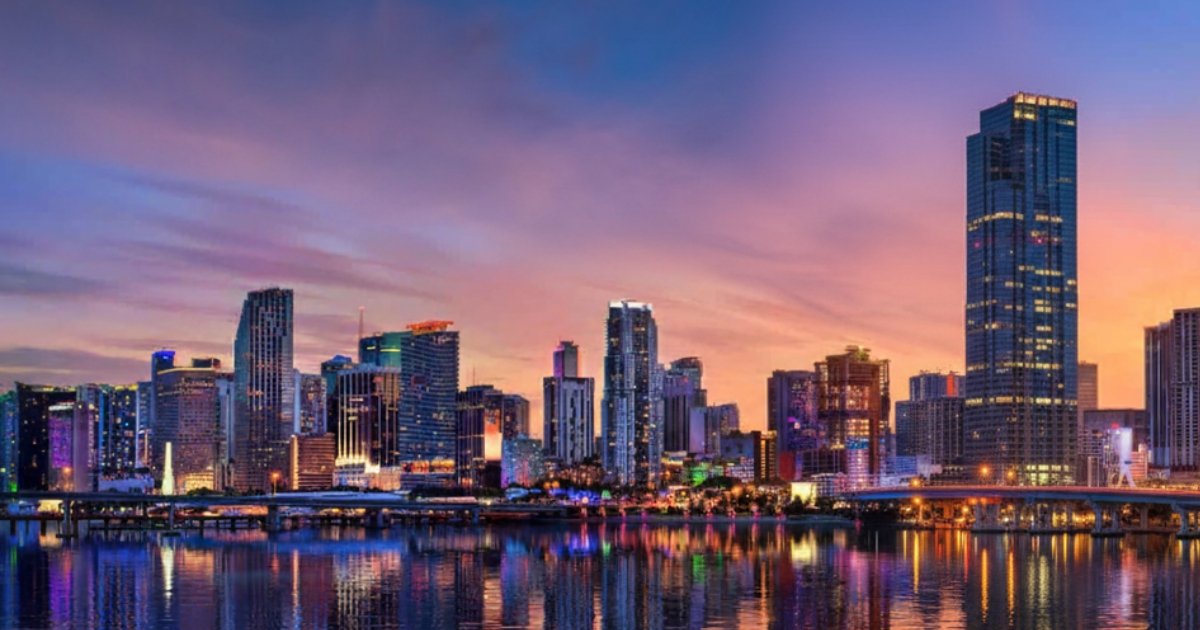Living in Downtown Miami: Your Ultimate Real Estate & Cultural Hub Guide 2025
Welcome to Downtown Miami—the beating heart of South Florida's most dynamic metropolis. This is where Miami's past, present, and future converge in a dazzling display of waterfront skyscrapers, world-class museums, and an energy that never sleeps. From the free Metromover gliding overhead to the cultural treasures of Museum Park, Downtown Miami represents true urban living with a tropical twist.
If you're considering making Downtown Miami your home, you've discovered Miami's most connected neighborhood. This comprehensive guide walks you through everything you need to know—from real estate prices and transit options to schools, nightlife, and the lifestyle that makes this area one of Miami's most exciting places to call home.
📋 Table of Contents
- Where is Downtown Miami and Why Location Matters
- Getting Around: Exceptional Walkability & Transit
- The Downtown Miami Lifestyle: Urban Energy Meets Bayfront Beauty
- Downtown Miami Real Estate: Market Dynamics and Opportunities
- Dining, Nightlife & Entertainment in Downtown Miami
- Schools and Education Options
- Safety, Crime, and Community Feel
- Pros and Cons of Living in Downtown Miami
- Who Should Live in Downtown Miami?
- Frequently Asked Questions
Downtown Miami Quick Facts
- Location: Urban core of Miami, north of Miami River, east of I-95
- ZIP Codes: 33128, 33130, 33131, 33132
- Walk Score: 91 (Walker's Paradise)
- Median Home Price: ~$580,000 (Sept 2025)
- Average Rent (1BR): ~$2,850-$2,890/month
- Population: Diverse urban professionals, international residents
- Best For: Young professionals, urban enthusiasts, culture lovers
- Transit: Free Metromover, Metrorail, Brightline high-speed rail
Where is Downtown Miami and Why Location Matters

Downtown Miami occupies the city's historic urban core, positioned north of the Miami River and east of I-95, stretching along the stunning Biscayne Bay waterfront. The area encompasses Miami's Central Business District (CBD), Park West, and portions adjacent to the Arts & Entertainment District.
The ZIP codes covering Downtown Miami include 33128, 33130, 33131, and 33132. ZIP 33131, in particular, ranks as one of Miami's highest-density residential and office zones, reflecting the neighborhood's intense urban character.
Strategic Positioning at Miami's Crossroads
What makes Downtown Miami's location exceptional? You're positioned at the absolute center of South Florida's transportation network and cultural life. Brickell lies just minutes south via the free Metromover, Edgewater and Wynwood sit immediately north, and Miami Beach's white sands are a quick causeway drive east.
For professionals, Downtown Miami offers unmatched convenience. The neighborhood houses Miami's government center, major law firms, financial institutions, and corporate headquarters. Many residents walk to work, while others enjoy seamless transit connections that make car-free living genuinely viable.
The area includes several distinct sub-districts:
- Central Business District (CBD) - The traditional office and government core
- Park West - Residential towers with easy access to the Adrienne Arsht Center
- Museum Park - Home to Pérez Art Museum Miami (PAMM) and Phillip and Patricia Frost Museum of Science
- Bayfront Park District - The waterfront entertainment and event hub
Getting Around Downtown Miami: Exceptional Walkability & Transit
Downtown Miami earns a Walk Score of approximately 91, making it one of Miami-Dade County's most walkable neighborhoods and a rare exception in car-dependent South Florida.
Check Downtown Miami's Walk Score
The Free Metromover: Downtown's Secret Weapon

The Metromover revolutionizes urban living in Downtown Miami. This free, elevated people mover operates approximately 20 stations across Downtown and Brickell, running every 90 seconds during peak hours. With three loops (Inner Loop, Brickell Loop, and Omni Loop), residents can traverse the entire downtown core without driving.
The Metromover connects you to:
- Government Center (Metrorail hub)
- MiamiCentral Brightline station
- Bayfront Park and Bayside Marketplace
- All of Brickell's dining and entertainment
- The Adrienne Arsht Center for the Performing Arts
- American Airlines Arena (Kaseya Center)
Metrorail serves Downtown Miami at Government Center, providing heavy rail connections to Miami International Airport, Dadeland South, and northern Miami-Dade communities. While not as extensive as metro systems in older cities, for Downtown Miami residents, it delivers genuine car-free commuting options.
Brightline, Florida's high-speed intercity rail, operates from MiamiCentral station right in the heart of downtown. Comfortable, modern trains connect you to Fort Lauderdale, West Palm Beach, and now Orlando, transforming weekend getaways and work trips into stress-free experiences.
Typical Commute Times from Downtown Miami
- To Brickell: 3-8 minutes via Metromover
- To Miami International Airport (MIA): 15-20 minutes by car (non-rush), 30-35 minutes via Metrorail
- To Miami Beach: 12-20 minutes via MacArthur or Venetian Causeway
- To Fort Lauderdale Airport (FLL): 40-55 minutes via I-95 North
- To Wynwood: 5-10 minutes
- To Edgewater: 5-8 minutes
- To Coral Gables: 15-20 minutes
💡 Rush Hour Reality
Like any major urban center, traffic impacts drive times. Morning rush (7-9 AM) heading north on I-95 or evening rush (5-7 PM) can extend commutes significantly. However, Downtown Miami's exceptional transit infrastructure and concentrated employment mean many residents avoid highway commutes entirely.
Walkability for Daily Life
Can you live in Downtown Miami without a car? Absolutely. The neighborhood hosts multiple grocery options, dozens of restaurants, fitness studios, banks, pharmacies, and services—all within walking distance or a quick Metromover ride. Wide sidewalks, the pedestrian-friendly Flagler Street corridor, and the bayfront promenade make errands on foot genuinely pleasant.
That said, Miami's broader metro area remains car-centric. While you can thrive with car-lite living in Downtown Miami, you'll likely want a vehicle for beach days, exploring neighborhoods like Coconut Grove or Pinecrest, or venturing beyond the urban core.
🏠 Looking for Your Perfect Downtown Miami Home?
Let me help you find the ideal condo or apartment in Miami's urban heart. With expert knowledge of the market and exclusive listings, I'll guide you every step of the way.
The Downtown Miami Lifestyle: Urban Energy Meets Bayfront Beauty
What's it actually like to live in Downtown Miami day-to-day? The neighborhood delivers an unmistakably urban experience—think bustling sidewalks, cultural events, and skyline views—but with tropical breezes and palm trees softening the concrete jungle.
Who Lives in Downtown Miami?
Downtown Miami's population reflects urban diversity:
- Young professionals (25-40) working in finance, law, healthcare, or government
- International residents and expats, particularly from Latin America and Europe
- Singles and couples who prioritize location over space
- Urban enthusiasts seeking walkability and cultural access
- Students and faculty from nearby institutions
- Empty nesters downsizing from suburban homes
Families with school-age children exist in Downtown Miami but remain relatively uncommon compared to suburban neighborhoods. The area's condo-heavy housing and urban intensity appeal more to those embracing city living.
The Vibe: Cultural, Energetic, and Cosmopolitan

Living in Downtown Miami means waking to skyline views and the hum of urban activity. Weekday mornings buzz with professionals heading to offices, while evenings transform the neighborhood into a cultural and entertainment destination.
The energy is sophisticated but approachable—this isn't the party atmosphere of South Beach, nor is it as finance-focused as Brickell. Downtown Miami occupies a middle ground: cultural, diverse, and authentically urban.
Bayfront Park becomes a gathering place for festivals and concerts. Museum Park draws art lovers and families. The Adrienne Arsht Center's performances bring dressed-up crowds to sidewalk cafés. And as night falls, rooftop bars illuminate with city lights reflected in the bay waters.
Green Spaces and Waterfront Access
While decidedly urban, Downtown Miami offers more green space than you might expect:
Bayfront Park serves as the neighborhood's backyard—a 32-acre waterfront oasis hosting concerts, festivals, and daily recreation. The park features walking paths, event lawns, the Tina Hills Pavilion amphitheater, and stunning bay views.
Maurice A. Ferré Park (formerly Museum Park) provides beautifully landscaped grounds surrounding PAMM and the Frost Science Museum. It's a favorite spot for photos, picnics, and pre-museum strolls.
The Baywalk connects waterfront segments, offering jogging and cycling paths with bay breezes and skyline views—a welcome respite from urban density.
For beach access, Downtown Miami residents typically head to Key Biscayne (15-20 minutes) for pristine, less-crowded beaches, or across the causeway to South Beach (15-20 minutes) when they want the iconic Miami Beach experience.
Downtown Miami Real Estate: Market Dynamics and Opportunities
The Downtown Miami real estate landscape is dominated by high-rise condominiums and mixed-use towers. This is vertical living at its most concentrated, and understanding current market conditions is essential before buying or renting here.
Price Ranges and Market Conditions (2024-2025)
Median Sale Price: Approximately $580,000 as of September 2025, down 6.5% year-over-year. The Miami Central Business District subset shows a median around $510,000, up 2% year-over-year—indicating different dynamics between CBD proper and broader downtown areas.
Context: Miami's citywide median sits at approximately $605,000 (down 6.9% year-over-year), so Downtown Miami is tracking the broader market cooldown while remaining relatively affordable compared to luxury neighborhoods.
Days on Market: Approximately 133 days average, significantly longer than the 30-45 day turnover during 2021-2022's peak frenzy.
Rental Rates (Average):
- 1-bedroom: $2,850-$2,890 per month
- 2-bedroom: ~$3,950 per month
- Overall average apartment rent: ~$3,579 per month
These figures reflect full-service buildings with amenities. Older towers or those with fewer amenities may rent for less, while brand-new developments with hotel-branded services command premiums.
Market Dynamics: A Buyer-Leaning Environment
As of 2025, Downtown Miami's condo market leans slightly toward buyers. After the seller's market of 2021-2022, increased inventory, higher interest rates, and broader economic uncertainty have created more negotiating room for purchasers.
This doesn't signal market weakness—Downtown Miami remains highly desirable for its location and lifestyle. It simply means buyers have more choices and shouldn't feel pressured to make hasty decisions. Well-priced units in premium buildings with bay or river views still move relatively quickly.
💡 Condo Living Means HOA Considerations
Every Downtown Miami condo comes with Homeowners Association fees, typically ranging from $0.40-$0.80+ per square foot monthly. These cover building maintenance and insurance (increasingly expensive in Florida), amenities (pools, gyms, concierge services, valet), and common area utilities. Always factor HOA fees into your total housing cost when budgeting.
Notable Developments and Buildings
Downtown Miami's skyline continues evolving with mixed-use towers adding to an impressive existing inventory:
Established Landmarks:
- Ten Museum Park - Bayfront luxury with museum proximity
- 500 Brickell - Technically at the downtown/Brickell border, iconic tower
- Canvas - Modern design in the arts district
- Opera Tower - Distinctive circular design
Miami Worldcenter Development:
- This massive mixed-use project on the Park West edge includes residential towers, retail, entertainment, and hotel components
- Adds significant inventory but also amenities and vibrancy to the area
Brightline-Oriented Growth:
- New developments cluster around MiamiCentral station, capitalizing on intercity rail access
Hotel-Branded Residences:
- Several luxury hotel brands have introduced condo-hotel concepts, offering hotel services with ownership benefits
Dining, Nightlife & Entertainment in Downtown Miami
Downtown Miami delivers a diverse dining and entertainment scene that reflects its cosmopolitan character. From quick lunch spots catering to office workers to upscale restaurants perfect for special occasions, the neighborhood offers variety.
Dining Highlights
While Downtown Miami doesn't match Wynwood's culinary density or Brickell's concentration of high-end restaurants, it offers solid options:
- Zuma - Upscale Japanese izakaya-style dining at Epic Hotel
- Area 31 - Seafood with stunning bay views at Kimpton EPIC Hotel
- Boulud Sud Miami - Mediterranean cuisine from Daniel Boulud
- Bayside Marketplace - Casual waterfront dining with multiple options
- Flagler Street - Diverse Latin American eateries and cafés
Many residents also venture to nearby Brickell (5 minutes via Metromover) for its extensive restaurant scene, or to Wynwood for trendy spots and food halls.
Nightlife and Entertainment
Downtown Miami's nightlife centers around cultural venues and rooftop bars rather than nightclub scenes:
- Adrienne Arsht Center - World-class performing arts, ballet, opera, and Broadway shows
- Pérez Art Museum Miami (PAMM) - Contemporary art exhibitions and bay-view terraces
- Frost Science Museum - Planetarium, aquarium, and interactive science exhibits
- Bayfront Park - Hosts major concerts and festivals throughout the year
- Kaseya Center (formerly American Airlines Arena) - Miami Heat games and major concerts
- Rooftop bars - Several hotels offer stunning skyline and bay views
For high-energy nightlife, residents typically head to South Beach or Wynwood. Downtown Miami offers a more refined, cultural evening experience.
Shopping
Shopping in Downtown Miami is functional rather than destination-oriented:
- Bayside Marketplace - Waterfront mall with retail, dining, and entertainment
- Miami Worldcenter - Emerging retail district with new shops and restaurants
- Flagler Street - Historic commercial corridor with diverse shops
For major shopping, residents typically visit Aventura Mall (20 minutes north), Coral Gables' Miracle Mile, or the Design District.
Schools and Education Options
Downtown Miami isn't typically chosen for its school district, but families do live here and have options:
Public Schools
Miami-Dade County Public Schools serves the area. Assigned schools vary by exact address, but generally include:
- Elementary: Riverside Elementary, Southside Elementary
- Middle: Citrus Grove Middle School, Nautilus Middle School
- High: Miami Senior High School, Miami Arts Studio 6-12 @ Zelda Glazer
School quality varies. Many families in Downtown Miami pursue magnet programs, charter schools, or private education.
Private and Charter Schools
Several private and charter options exist within or near Downtown Miami:
- MAST Academy - Highly rated maritime and science magnet school on Key Biscayne
- Ransom Everglades School - Elite private school in Coconut Grove
- Gulliver Schools - Multiple campuses across Miami-Dade
- Carrollton School of the Sacred Heart - All-girls Catholic school in Coconut Grove
Families serious about education often choose neighborhoods like Coral Gables, Pinecrest, or Coconut Grove for their stronger public school systems.
Higher Education
Downtown Miami offers proximity to several colleges and universities:
- Miami Dade College - Wolfson Campus right in downtown
- Florida International University (FIU) - Main campus 20 minutes west
- University of Miami - Coral Gables campus 15 minutes south
Safety, Crime, and Community Feel
Safety is a common concern for prospective Downtown Miami residents, and it's important to address honestly.
Crime Statistics and Reality
Downtown Miami experiences higher crime rates than Miami's suburban neighborhoods, which is typical for urban cores nationwide. Property crime (theft, car break-ins) occurs more frequently than violent crime.
However, context matters:
- Well-lit, high-traffic areas (Bayfront Park, Museum Park, Brickell Avenue) feel safe, especially during daytime and evening hours
- Residential towers typically have 24/7 security, concierge services, and controlled access
- The Metromover is generally safe, though caution is advised late at night
- Certain blocks, particularly west of I-95 and in Overtown, have higher crime rates
Most Downtown Miami residents report feeling safe in their daily routines. Standard urban precautions apply: stay aware of surroundings, avoid displaying valuables, and stick to well-traveled areas at night.
Community Feel
Downtown Miami's community feel differs from suburban neighborhoods. It's more transient, with residents coming and going, and less "neighborly" in the traditional sense. However, you'll find community through:
- Building amenities and social events
- Cultural institutions and their programming
- Fitness studios and gyms
- Local business relationships (favorite coffee shop, restaurant, etc.)
- Professional networks (many neighbors work nearby)
If you're seeking tight-knit, suburban-style community, neighborhoods like Coconut Grove or Coral Gables may be better fits. Downtown Miami offers urban anonymity with pockets of connection.
Pros and Cons of Living in Downtown Miami
✅ Pros
- Exceptional Transit: Free Metromover, Metrorail, and Brightline make car-free living viable
- Walkability: Walk Score 91—rare in South Florida
- Cultural Access: Museums, performing arts, and festivals at your doorstep
- Central Location: Minutes from Brickell, Wynwood, Miami Beach, and major employment centers
- Urban Energy: Vibrant, cosmopolitan atmosphere with diverse dining and entertainment
- Waterfront Living: Bay views and access to Bayfront Park and Baywalk
- Professional Convenience: Walk to work for many government, legal, and financial professionals
- Modern Amenities: High-rise condos with pools, gyms, and concierge services
⚠️ Cons
- Higher Crime: Urban crime rates higher than suburban neighborhoods
- Noise and Density: Sirens, construction, and urban sounds are constant
- Limited Green Space: Less nature compared to suburban areas
- School Challenges: Public schools not as strong as Coral Gables or Pinecrest
- HOA Fees: High condo fees ($0.40-$0.80+/sq ft) add to housing costs
- Parking Costs: Even with a car, parking can be expensive and limited
- Less Family-Oriented: Fewer playgrounds, family activities compared to suburbs
- Tourist Traffic: Bayside Marketplace and events bring crowds
Who Should Live in Downtown Miami?
✅ Downtown Miami is Perfect For:
- Young Professionals (25-40): Working in downtown offices, government, law, or finance
- Urban Enthusiasts: Those who thrive on city energy, walkability, and cultural access
- Transit-Dependent Residents: People who want to minimize or eliminate car dependency
- Culture Lovers: Art, music, and performing arts enthusiasts
- International Residents: Expats and immigrants seeking cosmopolitan atmosphere
- Empty Nesters: Downsizing from suburban homes, wanting lock-and-leave convenience
- Singles and Couples: Prioritizing location and lifestyle over space
❌ Downtown Miami May Not Be Ideal For:
- Families with School-Age Children: Better school options exist in Coral Gables, Pinecrest, or Coconut Grove
- Peace and Quiet Seekers: Urban noise and density are constant
- Nature Lovers: Limited green space and outdoor recreation
- Car Enthusiasts: Parking is expensive and limited
- Budget-Conscious Renters: High rents and HOA fees make it expensive
- Suburban Lifestyle Seekers: Yards, driveways, and neighborhood feel don't exist here
Ready to Make Downtown Miami Your Home?
Whether you're buying, renting, or investing in Downtown Miami real estate, I'm here to help. With deep knowledge of the market and exclusive access to listings, I'll guide you to your perfect urban home.
Frequently Asked Questions About Downtown Miami
Is Downtown Miami safe to live in?
Downtown Miami has higher crime rates than suburban neighborhoods, typical for urban cores. However, well-lit, high-traffic areas and residential towers with security feel safe for most residents. Standard urban precautions apply: stay aware, avoid displaying valuables, and stick to well-traveled areas at night. Most residents report feeling safe in their daily routines.
Can you live in Downtown Miami without a car?
Yes! Downtown Miami is one of the few Miami neighborhoods where car-free living is genuinely viable. The free Metromover, Metrorail, Brightline, and Walk Score 91 make daily life without a car possible. Grocery stores, restaurants, services, and entertainment are all walkable or accessible via transit. However, a car remains useful for beach trips and exploring broader Miami.
What is the average rent in Downtown Miami?
As of 2025, average rents in Downtown Miami are approximately $2,850-$2,890/month for 1-bedroom apartments and ~$3,950/month for 2-bedrooms. Overall average apartment rent is ~$3,579/month. These figures reflect full-service buildings with amenities. Older towers or those with fewer amenities may rent for less.
Is Downtown Miami good for families with children?
Downtown Miami is less ideal for families with school-age children compared to suburban neighborhoods. Public schools in the area are not as strong as those in Coral Gables, Pinecrest, or Coconut Grove. The urban environment, limited green space, and condo-heavy housing appeal more to young professionals and couples. Families do live here but typically pursue private schools or magnet programs.
What's the difference between Downtown Miami and Brickell?
Downtown Miami and Brickell are adjacent but distinct. Downtown is the historic urban core with government offices, cultural institutions (museums, performing arts), and a more diverse, cosmopolitan vibe. Brickell is the financial district with more upscale dining, nightlife, and a younger, finance-focused demographic. Both offer high-rise condo living and excellent transit, but Downtown emphasizes culture while Brickell emphasizes sophistication and nightlife.
Final Thoughts: Is Downtown Miami Right for You?
Downtown Miami represents urban living at its most authentic in South Florida. This is where Miami's energy, culture, and connectivity converge—a place where you can walk to museums, ride free transit to work, and enjoy skyline views from your high-rise home.
It's not for everyone. Families seeking top schools, nature lovers craving green space, and those who value peace and quiet will likely prefer suburban neighborhoods. But for young professionals, urban enthusiasts, and culture lovers who want to be at the center of it all, Downtown Miami delivers an unmatched lifestyle.
The real estate market offers opportunities in 2025, with more inventory and negotiating room than the frenzied 2021-2022 period. Whether you're buying, renting, or investing, now is a good time to explore what Downtown Miami has to offer.
If you're considering relocating to Miami and want to experience true urban living with a tropical twist, Downtown Miami deserves serious consideration. It's not just a place to live—it's a lifestyle choice that puts you at the beating heart of South Florida's most dynamic city.
Ready to explore Downtown Miami real estate? Contact me today for expert guidance and exclusive listings.
We are just a click away and we are always available. Contact us:

